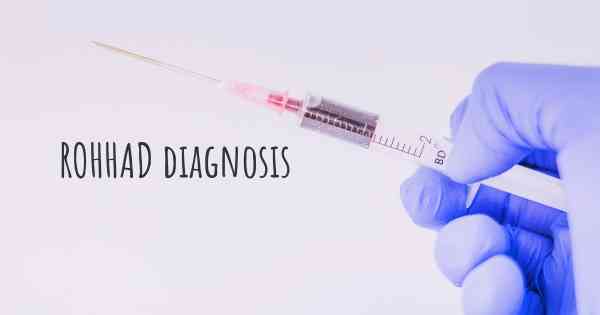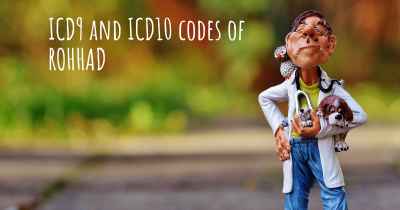How is ROHHAD diagnosed?
See how ROHHAD is diagnosed. Which specialists are essential to meet, what tests are needed and other useful information for the diagnosis of ROHHAD

How is ROHHAD diagnosed?
ROHHAD (Rapid-onset Obesity with Hypothalamic Dysfunction, Hypoventilation, and Autonomic Dysregulation) is a rare and complex pediatric disorder that affects the autonomic nervous system, causing various symptoms including rapid-onset obesity, hypoventilation, and hypothalamic dysfunction. Diagnosing ROHHAD can be challenging due to its rarity and the overlap of symptoms with other conditions. However, a comprehensive evaluation involving various medical professionals is crucial in reaching a diagnosis.
Medical History and Physical Examination
The diagnostic process typically begins with a detailed medical history review, where the healthcare provider gathers information about the patient's symptoms, their onset, progression, and any associated factors. This helps in identifying patterns and ruling out other potential causes. A thorough physical examination is then conducted to assess the patient's overall health, growth patterns, and any specific physical features that may be indicative of ROHHAD.
Diagnostic Tests
Several diagnostic tests are employed to aid in the diagnosis of ROHHAD:
Polysomnography (Sleep Study)
Polysomnography is a crucial test in diagnosing ROHHAD as it helps evaluate the patient's breathing patterns during sleep. It can identify hypoventilation, which is a common symptom of the condition. During the sleep study, various parameters such as oxygen levels, carbon dioxide levels, and respiratory effort are monitored to assess the patient's respiratory function.
Endocrine Evaluation
Since ROHHAD involves hypothalamic dysfunction, an endocrine evaluation is performed to assess the patient's hormonal levels. This may include measuring levels of growth hormone, cortisol, thyroid hormones, and other relevant markers. Deviations from normal hormone levels can provide valuable insights into the underlying condition.
Cardiorespiratory Monitoring
Continuous cardiorespiratory monitoring is often employed to assess the patient's heart rate, blood pressure, and respiratory function over an extended period. This monitoring can help identify autonomic dysregulation, which is a key feature of ROHHAD.
Genetic Testing
Genetic testing may be considered in suspected cases of ROHHAD to identify any specific genetic mutations or variations associated with the condition. However, it is important to note that not all cases of ROHHAD have a known genetic cause, and genetic testing may not always yield definitive results.
Imaging Studies
Various imaging studies, such as Magnetic Resonance Imaging (MRI) and Computed Tomography (CT) scans, may be conducted to assess the structure and function of the brain, hypothalamus, and other relevant areas. These imaging studies can help identify any abnormalities or structural changes that may contribute to the symptoms.
Other Evaluations
Additional evaluations may be performed based on the patient's specific symptoms and clinical presentation. These may include pulmonary function tests to assess lung function, echocardiography to evaluate heart function, and neurological assessments to identify any neurological abnormalities.
Collaboration and Multidisciplinary Approach
Diagnosing ROHHAD requires a collaborative and multidisciplinary approach involving various medical specialists, including pediatricians, endocrinologists, pulmonologists, geneticists, and neurologists. These experts work together to interpret the results of the diagnostic tests, correlate them with the patient's clinical presentation, and rule out other potential conditions.
Challenges and Differential Diagnosis
Diagnosing ROHHAD can be challenging due to its rarity and the overlap of symptoms with other conditions. The symptoms of ROHHAD, such as rapid-onset obesity and hypoventilation, can also be present in other disorders like Prader-Willi syndrome, Bardet-Biedl syndrome, and hypothalamic tumors. Therefore, a thorough evaluation is necessary to differentiate ROHHAD from these conditions.
Conclusion
Diagnosing ROHHAD involves a comprehensive evaluation of the patient's medical history, physical examination, and various diagnostic tests. The collaboration of multiple medical specialists is crucial in reaching an accurate diagnosis. Early diagnosis is essential to initiate appropriate management strategies and provide necessary support to patients and their families.








